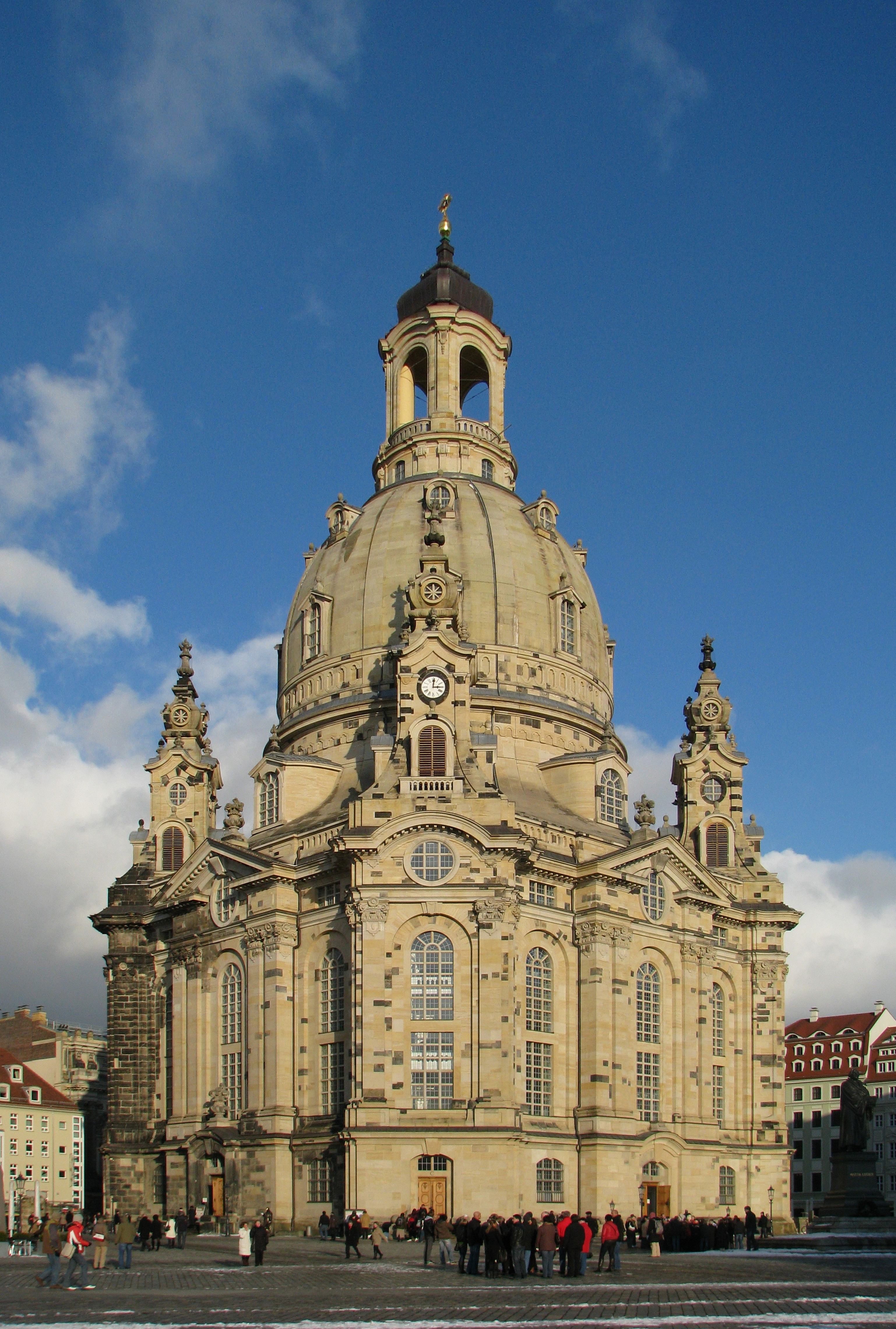George Bähr on:
[Wikipedia]
[Google]
[Amazon]
 George Bähr (15 March 1666 – 16 March 1738) was a German
George Bähr (15 March 1666 – 16 March 1738) was a German
 George Bähr (15 March 1666 – 16 March 1738) was a German
George Bähr (15 March 1666 – 16 March 1738) was a German architect
An architect is a person who plans, designs and oversees the construction of buildings. To practice architecture means to provide services in connection with the design of buildings and the space within the site surrounding the buildings that h ...
.
Life
George Bähr was born into a poor family in Fürstenwalde (now a part ofGeising
Geising is a ''Stadtteil'' (municipal division) of Altenberg in the Sächsische Schweiz-Osterzgebirge district, in Saxony, Germany.
, Saxony
Saxony (german: Sachsen ; Upper Saxon: ''Saggsn''; hsb, Sakska), officially the Free State of Saxony (german: Freistaat Sachsen, links=no ; Upper Saxon: ''Freischdaad Saggsn''; hsb, Swobodny stat Sakska, links=no), is a landlocked state of ...
), the son of a weaver. The village priest, however, helped pay for his education, and Bähr was able to become a carpenter's apprentice in Lauenstein, Saxony
Saxony (german: Sachsen ; Upper Saxon: ''Saggsn''; hsb, Sakska), officially the Free State of Saxony (german: Freistaat Sachsen, links=no ; Upper Saxon: ''Freischdaad Saggsn''; hsb, Swobodny stat Sakska, links=no), is a landlocked state of ...
.
In 1690, Bähr went to Dresden to start work as a carpenter. His dream was to go to Italy
Italy ( it, Italia ), officially the Italian Republic, ) or the Republic of Italy, is a country in Southern Europe. It is located in the middle of the Mediterranean Sea, and its territory largely coincides with the homonymous geographical re ...
and see the famous buildings there, so in his spare time he studied mechanics
Mechanics (from Ancient Greek: μηχανική, ''mēkhanikḗ'', "of machines") is the area of mathematics and physics concerned with the relationships between force, matter, and motion among physical objects. Forces applied to objects r ...
, calling himself both an artist and a mechanic, and designing not only castles and palaces but also sketches of organs
In biology, an organ is a collection of tissues joined in a structural unit to serve a common function. In the hierarchy of life, an organ lies between tissue and an organ system. Tissues are formed from same type cells to act together in a f ...
.
In 1705, aged 39, Bahr was named Dresden's City Master Carpenter, although he did not even have a master carpenter's certificate. One of Bähr's main goals was to modernise the city's churches. He believed that the existing buildings did no justice to Protestant church services in particular.
His first building was the parish church in the Loschwitz area of Dresden, a building in the shape of a stretched-out octagon, completed in 1708.
The Dresden ''Waisenhauskirche'' (Orphanage Church) was built around 1710, followed by the ''Dreifaltigkeitskirche'' (Trinity Church) in Schmiedeberg, in the Ore Mountains, 1713-1716. Between 1719 and 1726 the church in Forchheim was built, as well as more in Königstein, Hohnstein and Kesselsdorf
Kesselsdorf is a village in Saxony, Germany, part of the town of Wilsdruff. It is located close to the Saxon capital city of Dresden.
The village is known for the decisive Battle of Kesseldorf between Austrians and Prussians on December 15, 1745 ...
(all in Saxony) and a considerable amount of housing in Dresden.
But Bähr is most famous for designing the Frauenkirche in Dresden. He was given the task in 1722; in 1726, the design was approved and work began. From 1730, Bähr became the first in Germany to go by the title of “Architect”.
Whilst working on the Frauenkirche, Bähr also oversaw the building of the Dreikönigskirche in Dresden's Neustadt area, designed by Matthäus Daniel Pöppelmann
Matthäus Daniel Pöppelmann (1662–1736) was a German master builder and architect who helped to rebuild Dresden after the fire of 1685. His most famous work is the Zwinger Palace.
Life
Pöppelmann was born in Herford in Westphalia on 3 ...
.
George Bähr did not live to see the Frauenkirche completed – he died in Dresden
Dresden (, ; Upper Saxon: ''Dräsdn''; wen, label=Upper Sorbian, Drježdźany) is the capital city of the German state of Saxony and its second most populous city, after Leipzig. It is the 12th most populous city of Germany, the fourth larg ...
, aged 72, and was buried in the church's vaults. In 2004, a memorial was built to him in the castle at Lauenstein, where he learned his trade.
DNA Analysis
In 2018, researchers from the University of Tuebingen and the Max Planck Institute for the Science of Human History in Jena analyzed the genome of George Bähr. They found that he most likely had light skin pigmentation, brown eyes and is of central European origin.Gallery
References
{{DEFAULTSORT:Bahr, George 1666 births 1738 deaths People from Altenberg, Saxony 18th-century German architects